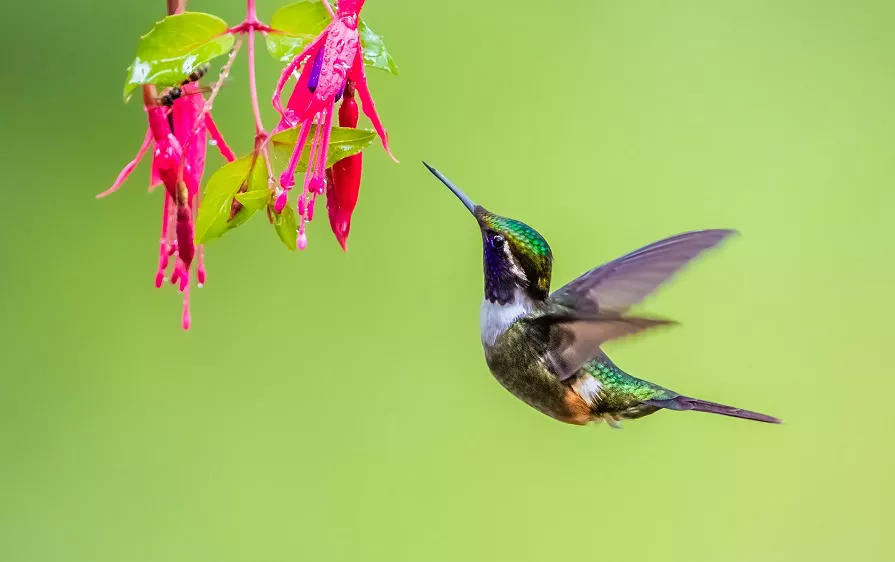Hummingbirds are one of the most fascinating and unique birds on the planet. These tiny, agile creatures are known for their fast wingbeats, bright colors, and ability to hover in mid-air. In this article, we will explore what makes hummingbirds so special and take a closer look at their characteristics, behavior, and habitats.
- Physical Characteristics
Hummingbirds are small birds, with most species measuring between 3 to 5 inches in length and weighing less than an ounce. Despite their small size, they have a unique physical structure that allows them to fly with incredible speed and agility. Hummingbirds have a large breastbone that supports strong chest muscles used for flapping their wings. They also have a long, thin beak used for feeding and a tongue that is grooved and can extend far beyond their beak to reach nectar.
Hummingbirds have brightly colored feathers that can be green, red, blue, or purple. The colors of their feathers are often iridescent, meaning they appear to change color depending on the angle and amount of light. This makes them one of the most beautiful birds in the world.
- Habitat and Range
Hummingbirds are found throughout the Americas, from Alaska to Tierra del Fuego. They can be found in a variety of habitats, including forests, grasslands, deserts, and even cities. Some species are migratory and travel long distances to breed and feed.
- Behavior
Hummingbirds are known for their unique behavior. They have the ability to hover in mid-air by flapping their wings at a rapid pace, which can be up to 80 beats per second. This allows them to feed on nectar from flowers while in flight. Hummingbirds are also very territorial and will defend their feeding and nesting areas aggressively.
- Diet
Hummingbirds primarily feed on nectar from flowers, which provides them with the energy they need for their high metabolism. They also eat insects and spiders for protein, which makes up about 10% of their diet.
- Breeding and Nesting
Hummingbirds are solitary birds and do not form pairs for life. Instead, males court females through elaborate displays, which involve aerial acrobatics and vocalizations. Once a female selects a mate, she builds a small nest out of soft materials like moss and spiderwebs. The female lays two small, white eggs, which hatch after about 16-18 days. The young birds fledge after about 3 weeks and are ready to fly and feed on their own.
- Conservation Status
Many species of hummingbirds are threatened by habitat loss, climate change, and other factors. In addition, hummingbirds are sometimes caught and sold illegally as pets or used in traditional medicine. Efforts to protect hummingbirds include preserving their habitats, regulating the trade of live birds, and promoting sustainable agriculture practices that protect their food sources.
In conclusion, hummingbirds are a unique and fascinating group of birds known for their beautiful colors, incredible agility, and unusual behaviors. With their delicate beauty and important ecological role, these tiny birds remind us of the amazing diversity of life on our planet and the importance of protecting it for future generations.


 Facebook
Facebook  Instagram
Instagram  Youtube
Youtube 